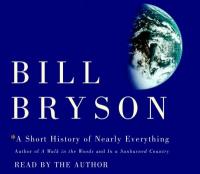My mom has a theory that once we’ve run out of new things to talk about at family get togethers, we revert to talking about things we have seen on social media or things our pets did (these also overlap into a venn diagram that includes both), and while my cousin’s cat is quite charming, we can only talk about him for so long.
That is why, this year, I am giving you a tried and true method to spice up your holiday gatherings. When things stagnate, find a random fact that you can insert into the conversation to keep things interesting (extra points if it’s related to the topic at hand).
My favorite place to gather said facts is through reading (or listening to) Popular Science books, and Denver Public Library staff have compiled just such a list for your enjoyment. Check it out here! But, “Monica”, you might say, “family gatherings are just around the corner, and I don’t have time to read all of these books”. I had thought you might say that, and have put together a list of facts for you to use for now, giving you plenty of time to prepare for future events.
- A large male octopus can lift 30 pounds with one three inch sucker and a great pacific octopus may have up to 1,600 suckers. (from The Soul of the Octopus by Sy Montgomery)
- 35-pounds of maple leaves contain enough sucrose to make three pecan pies, enough cellulose to make 300 sheets of paper, and enough magnesium to fill 14 multivitamins. (from Lab Girl by Hope Jahren)
- The first protozoa (or animalcules) were seen by a Dutch city official named Leeuwenhoek in 1675. He had no scientific training and built glass lenses in his spare time. (from I Contain Multitudes by Ed Yong)
- The Milky Way, Andromeda Galaxy, and Magellanic Clouds have no reference to stars because they were named before telescopes were invented. The word galaxy is actually based on the Greek word galaxias meaning milky. (from Astrophysics for People in a Hurry by Neil deGrasse Tyson)
- To see a plane from the ground would be the approximately same distance as it would to see the ocean’s surface from the bottom of the Marianas Trench (around 6.5 miles).The average depth of the oceans is 2.5 miles. (from Storm in a Teacup: The Physics of Everyday Life by Helen Czerski)
- In 1675, chemist Hennig Brand attempted to turn urine into gold based on their similar color. He was unsuccessful, but the resulting substance both glowed and would combust when exposed to air. It would eventually come to be called phosphorous. (from A Short History of Nearly Everything by Bill Bryson).
Whether you are spending the holidays in person or via Zoom, with your blood relatives or chosen family, spice things up by memorizing three random facts from Pop Science titles that you can insert into conversation when there is nothing else to be said. To make sure we're all ready, share your own favorite fact in the comments below.
A guest blog by Monica, DPL librarian and member of the Pop Science Core Collection team





